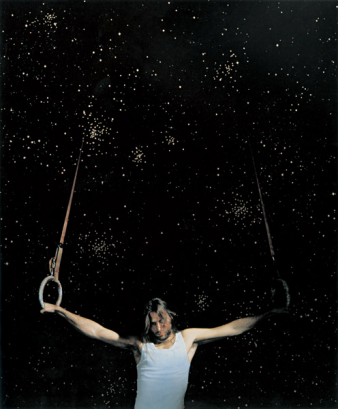| Umělec magazine 2003/1 >> Venice as Usual: An Overdose | List of all editions. | ||||||||||||
|
|||||||||||||
Venice as Usual: An OverdoseUmělec magazine 2003/101.01.2003 Janka Vukmir | venice biennale | en cs |
|||||||||||||
|
"It might be unpopular — but true — to say that there is too much of everything in Venice. Too many artists, too many exhibitions, too many curators, concepts, meetings, publications, Euros spent, and this year the absolute record of too many degrees C°; the latter being the dominant but least interesting ingredient in the overdose. The multitude of places, protagonists and art products pose the question of criteria: are there any, or are there too many? To continue this discourse we should now throw in other economical and political factors of globalization etc., something we don’t wish to do here. So, the main question remains — not what to do with the limitations of our capacity to digest and absorb the prescription, but how do the protagonists of Biennale relate to an exhibition factory that tries to promote the individual position over corporate globalization, often using the means and methods of the latter? Do the multitudes and multiplication help to promote individuality or vice versa?
The fact is: Capo di Biennale, Mr. Bonami, decided to withdraw the traditional dictatorship of the exhibition’s main curator, and invited a crew of curators to take over, claiming that the result of the dreams and conflicts is the dictatorship of the viewer. Maybe so, but in the developed art market part of the world there is the motto: what the audience wants — the artists should provide. And this mostly reflects the opinion of the artists and their gallerists, not the buyers. The strongest contemporary Biennale forces are the new and emerging art states of Europe, Asia and Africa, and these are still ruled by the artists and curators, and not the viewers or buyers. Perhaps this is precisely what we have learned this time around in Venice. My guess is that Bonami had a great idea, but its real meaning was not fulfilled by his fellow curators. The flogged to death concept of having national pavilions still made sense. There are always forces of ideology requiring change and production of exhibitions under the common roof of a dictatorship of a mixed and globalized world: Artists of all states — unite! But why wouldn’t we agree to a century old and persistent concept of having national pavilions for a Biennale? Especially because, more than anything, it offers us individual, instead of global gestures, and we always claim individuality to be the most important. Within these individual gestures lies the quality of Michal Kolecek’s concept for the Czecho-Slovak Pavilion, 2003. He has risked all global, unifying and individual standpoints. The concept of collaboration of the Czech and Slovak art groups brings us back to the problems outlined above; but the result this time is positive. They presented a singular figure in a position synchronically accordant and discordant with its environment. The subject figure is in the dual position of being a sportsmen and idol — both known by name, both bearing many levels of meaning, with obvious differences in the dimensions of their meaning on a local and global scale. And this singular figure is exposed to a video audience which is in a frenzy of adoration. The whole scene takes place under a calm starry night, so much like real life, in the single room of the exhibition space of two states at the most debated “national pavilion” concept in the whole art world. What a place to test culture and identity! I knew little about Kamera Scura and Kunst Fu before the show, although Michal presented them in Zagreb, but the artwork here tells me that they live and are aware of where we live, and this is always the most intriguing element in contemporary art. "
01.01.2003
Recommended articles
|
|||||||||||||








Comments
There are currently no comments.Add new comment